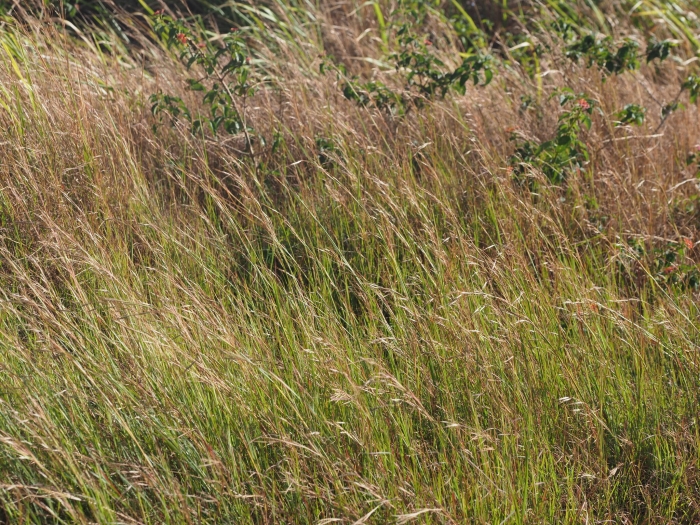Common Thatching Grass
(Hyparrhenia hirta)
Common Thatching Grass (Hyparrhenia hirta)
/
/

© Kevin Faccenda
CC BY 4.0
Image By:
© Kevin Faccenda
Recorded By:
Copyright:
CC BY 4.0
Copyright Notice:
Photo by: © Kevin Faccenda | License Type: CC BY 4.0 | License URL: http://creativecommons.org/licenses/by/4.0/ | Uploader: kevinfaccenda | Publisher: iNaturalist |
























Estimated Native Range
Summary
Hyparrhenia hirta, commonly known as Common Thatching Grass or Coolatai Grass, is a perennial grass native to savannas and open grasslands in Africa and Eurasia. It typically forms dense clumps ranging from 1 to 3 feet in height. In its native habitat, it is adapted to a variety of soil types, often thriving in poor soils and withstanding periodic fires. This species is well-suited to hot, dry climates and is often found in areas with seasonal drought.
Common Thatching Grass is valued for its use in thatching roofs and as fodder for livestock due to its high silica content, which makes it less palatable to pests. It is also used for erosion control and as a soil stabilizer in its native range. In cultivation, it requires minimal care, thriving in full sun and tolerating a range of soil conditions, from well-drained to somewhat compacted soils. However, due to its invasive nature when introduced to new regions, such as eastern Australia, it can outcompete native vegetation and alter fire regimes. Gardeners should be cautious about planting it outside its native range and check local regulations.CC BY-SA 4.0
Common Thatching Grass is valued for its use in thatching roofs and as fodder for livestock due to its high silica content, which makes it less palatable to pests. It is also used for erosion control and as a soil stabilizer in its native range. In cultivation, it requires minimal care, thriving in full sun and tolerating a range of soil conditions, from well-drained to somewhat compacted soils. However, due to its invasive nature when introduced to new regions, such as eastern Australia, it can outcompete native vegetation and alter fire regimes. Gardeners should be cautious about planting it outside its native range and check local regulations.CC BY-SA 4.0
Plant Description
- Plant Type: Grass
- Height: 3-6 feet
- Width: 2-3 feet
- Growth Rate: Rapid
- Flower Color: N/A
- Flowering Season: Summer, Fall
- Leaf Retention: Deciduous
Growth Requirements
- Sun: Full Sun
- Water: Low
- Drainage: Medium, Fast
Common Uses
Drought Tolerant, Erosion Control, Low Maintenance
Natural Habitat
Native to savannas and open grasslands in Africa and Eurasia
Other Names
Common Names: Common Thatching Grass, African Feather Grass, South African Bluestem, Tambookie Grass, Thatching Grass
Scientific Names: , Hyparrhenia hirta, Andropogon ambiguus, Andropogon ambiguus, Andropogon collinus, Andropogon dalmaticus, Andropogon distachyos var. hirtus, Andropogon giganteus, Andropogon hirsutus subsp. pubescens, Andropogon hirsutus var. pubescens
GBIF Accepted Name: